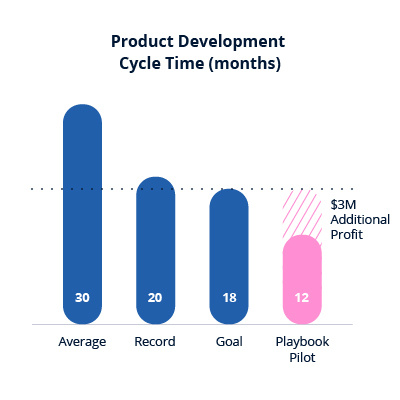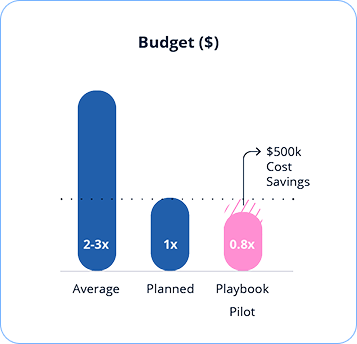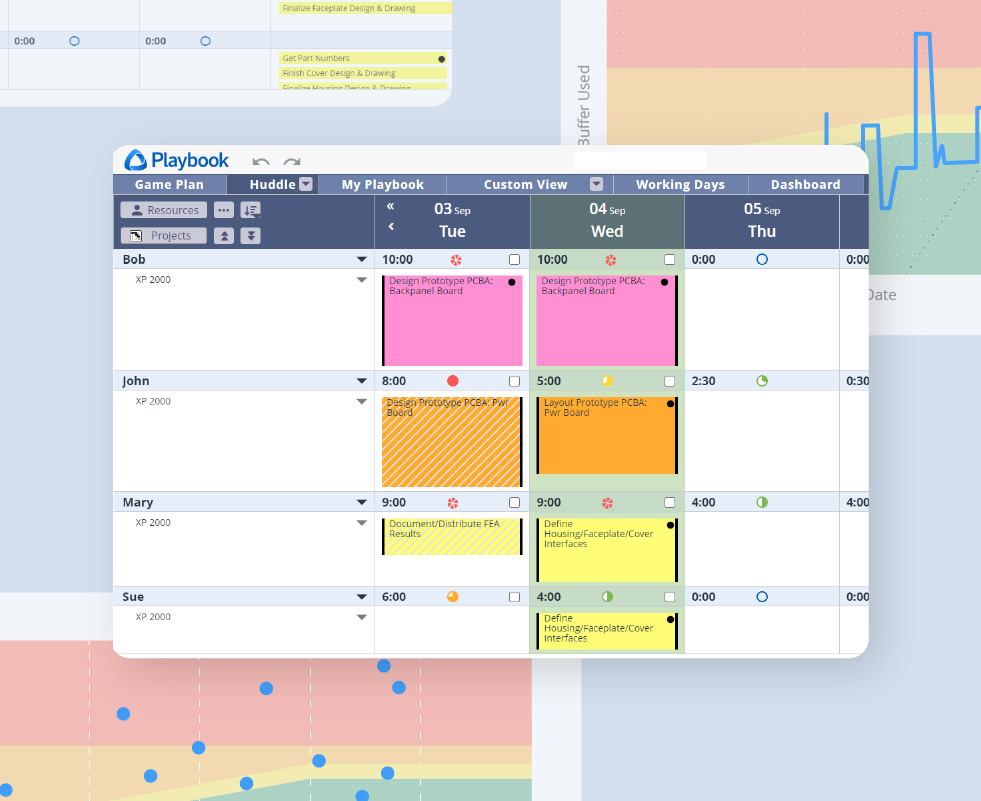Paul DeLong
VP Customer Success
Remember when a career in product development sounded like a dream job?

You would get to work on cool things and see them become real products? Maybe even change the world?
We remember that too. But then we got our first jobs and reality hit. Creating cool products was a ton of work. And it took forever.
Why couldn’t it be easier?
We knew it could be, so we
took it upon ourselves to fix it. That was almost two decades ago.
Along the way we’ve met a bunch of great people, made a lot of friends,
and learned from our successes and failures.
But over time, a few lessons became clear.
If teams have
the right information, they will hold themselves accountable. And if
collaboration is barrier free, innovation will become predictable. And
fun again.
The "Playbook Methods" were developed by three engineers who spent more than a decade helping companies improve their engineering tools and processes. They were also process geeks who spent countless hours studying Chaos Theory, Systems Thinking, Theory of Constraints, Queueing Theory, Critical Chain, Lean, Agile, Scrum, and Kanban methodologies.
So when they first applied the Playbook Methods, the customer—who had never finished a project on time—completed their project six months ahead of schedule and 20% under budget.
The second customer that used these methods won their company’s Chairman’s Award for finishing an enterprise IT project a year earlier than expected and saving over $400K.


The core problem is that people are working on the wrong things at the wrong time. Put another way—they have incorrect priorities. Every day this happens the project end date moves one day. That might not sound like much, but these slips accumulate over time and can easily double the length of your project. All without anyone noticing. But the end result is clear, and the formula is simple:

Cutting the cycle time by 50% is not something you can just sort of ignore.
VP R&D
Prior to the introduction of Playbook into our business, we had no real visibility of the reality of what was happening on a project.
Engineering Director
...Playbook added that catalytic capability to use all the other pieces in the right way.
CTO, Energy
The level of communication, the level of accountability, the visibility of progress is unprecedented here. So we are very happy with that.
Engineering Director, Medical Device
A product development cycle is something now that we really understand with consistency, demonstrated repeatability, and the ability to hit schedule...
VP & Chief Operating Officer of Milwaukee Valve
Enhanced Team Collaboration Means Unprecedented Success for Milwaukee Valve
I like how quickly we can see the impact of a delay on a small task. Now we can see when a task has an impact on the schedule.
Project Manager, Medical Device
Toss manual project boards and complete 28 projects in 9 months
My team is empowered. Their day is less confusing. They do their own planning. They are ‘tickled pink’.
Sr. Program Manager, Engineering Services
There was added expense of hiring technical services and training our team in the methods used. But conservatively, the savings from the reduced project time paid for this expense within three to four months—at least a 300% ROI.
CIO, Enterprise IT
Paul DeLong
VP Customer Success
Paul’s early experiences as a mechanical engineer developing national defense weapons for Lockheed Missiles and Space led him to question existing product development methods. Customer success is what drives Paul, and according to Playbook's clients, his quick wit is the best part of Playbook training.
Eric Graves
VP Technology
Aerospace and mechanical engineer turned NPD systems engineer, Eric leads the team of developers to enhance and evolve Playbook. Eric’s intellectual pursuit is taking the best of Lean, Agile, and Theory of Constraints and adapting them to increase project velocity, product quality, creative innovation, and happy new product development teams.
David Paulson
President
By the end of his first day as a mechanical engineer, David realized he liked fixing process problems more than working on the design problems. So after he had finished overhauling the engineering tools and processes there, he decided to venture out and improve the work environments at other companies. At Playbook, David continues to inspire the team to look for ways to improve the value, simplicity and impact of their solutions.

Playbook is more than just software, it’s a new approach to project management that takes the best of Lean, Agile, and Theory of Constraints to create a hybrid method that works for hardware teams or anyone working on a complex project. And don’t worry, the onboarding process consists of online training and live coaching using one of your active projects. This ensures your team is up and running with as little disruption as possible, and you will know for sure the solution will work in your environment.
Interested in learning more about Lean and Agile or Playbook software? Schedule a call or send us a message using the form. We will get back to you right away with answers.